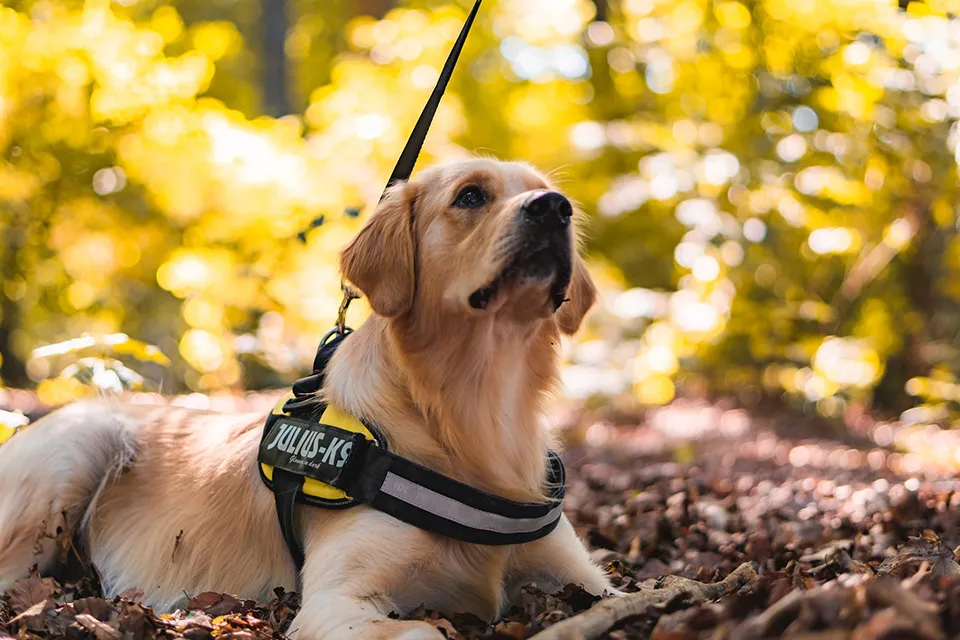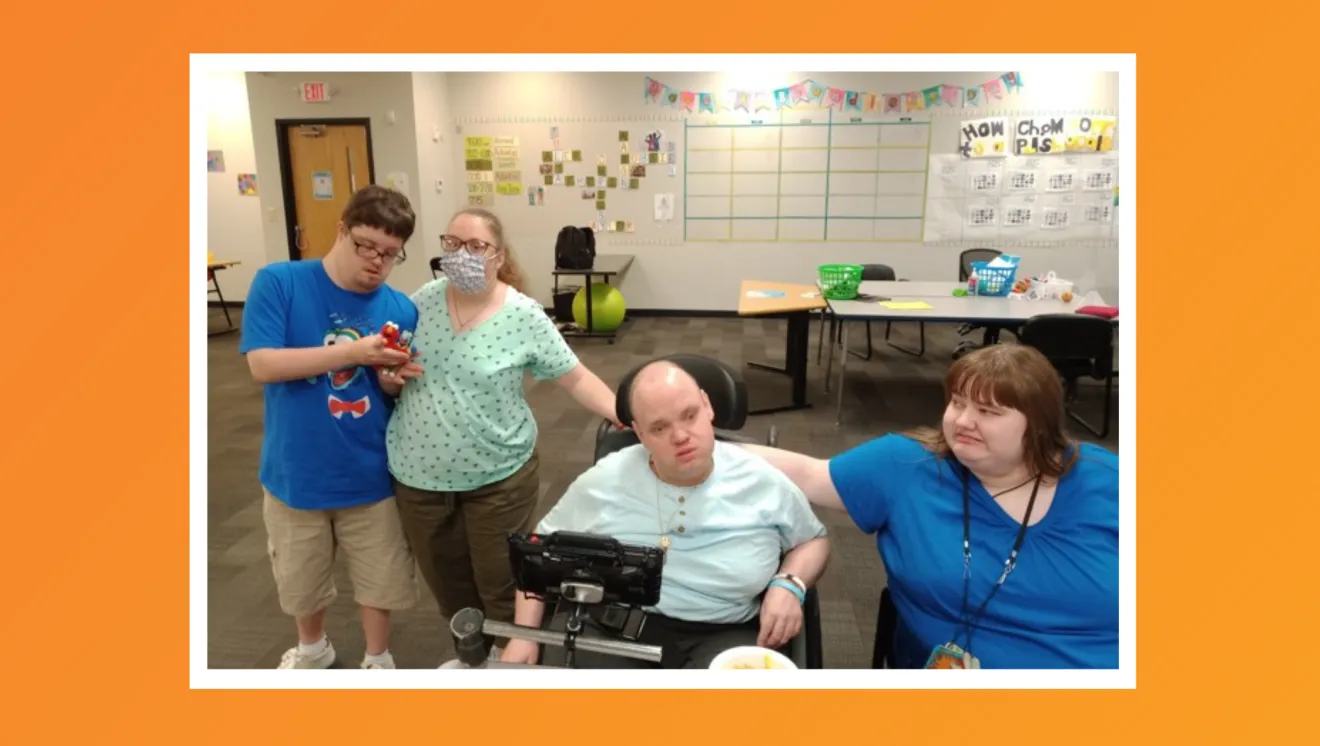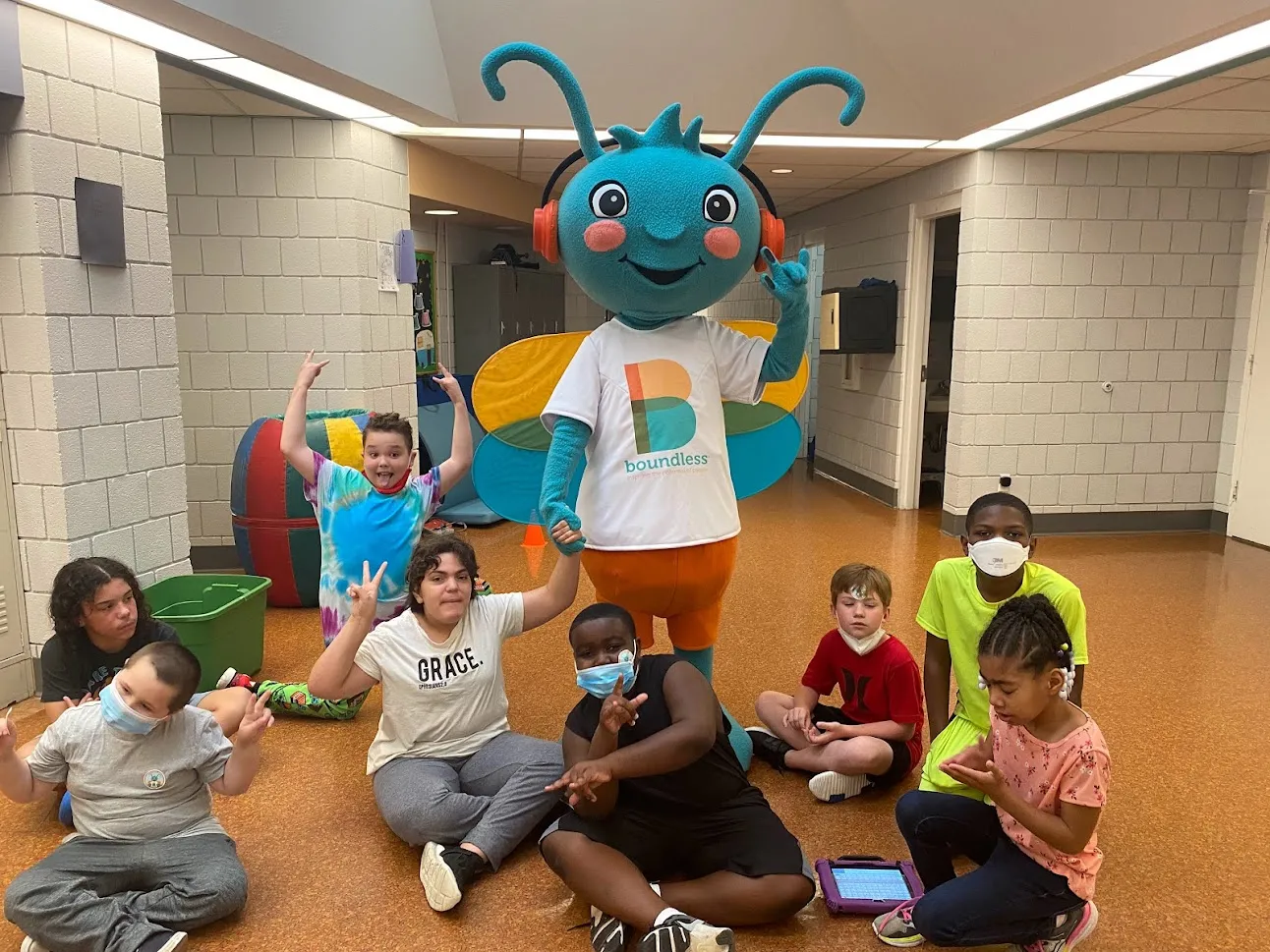Opening Doors: How Service Dogs Change Lives
- News

August 7-13 is International Assistance Dog Week
The year is 74 CE in Pompeii, and you watch history in the making while going about your day buying some new wool at the market. A scruffy dog with a curly tail guides a blind man through the market of Pompeii. The man and the dog stop between stalls, and the man taps the ground in front of himself with his cane, checking that the dog was not leading him astray. An artist watches on from next to you and later carves the scene into stone, memorializing the first known service dog.
Other artistic renditions of guide dogs popped up periodically, notably in 1250s China, 1561 Italy, and 1785 Britain, but the scruffy Pompeii terrier is the earliest known example of a dog being taught to help its owner. After World War I, guide dogs experienced a surge in popularity to help the newly blind victims of mustard gas, but modern-day service dogs go far beyond helping the blind these days. The sheer variety of tasks and opportunities service dogs provide may surprise you.
Service dogs are as unique as the people they are trained to assist. Dr. Stephen Shore, a well-known autism researcher, once said, “When you meet one person with Autism, you’ve met one person with Autism.” The same can be said about service dogs; if you’ve met one service dog, you’ve met one service dog.
For individuals with I/DD, service dogs can provide freedom and independence. Service dogs are trained to complete specific tasks that help manage their owner’s disability. For a person with visual impairments, like the owners of the first modern service dogs, their service dog helps them safely navigate streets and buildings. For someone with I/DD, a service dog’s job is rarely that simple because of the intricacies of life with I/DD.
Some of the more common activities that service dogs are trained to do to help individuals with I/DD are mobility tasks and balance, reminders to take medication, retrieving medication and other items, deep pressure therapy during panic attacks or overstimulation, completing simple tasks that their owner often forgets like closing doors, alerting to an impending seizure or diabetic emergency, disrupting dissociative episodes, and blocking exits during elopement attempts. Not every service dog is trained to do every single activity, though. If an individual needs a medical alert dog for seizures or diabetes, their dog probably won’t be trained to provide mobility assistance.
Individuals with I/DD often have co-existing health concerns along with their I/DD diagnosis. Diabetes and epilepsy are more common in people with I/DD, according to several studies. Similarly, severe food allergies are more common in autistic individuals than in those without autism. I/DD service dogs are often trained to complete tasks related to the I/DD diagnosis and the co-existing conditions. An example of this might be a dog that is primarily an autistic support dog with cross-training for food allergies. Not only would the dog be trained to assist with overstimulation and preventing elopement, but it might also be able to check food items for allergens, retrieve an EpiPen, and find help in the event of an allergic reaction.
All of this means that a dog can help someone who might otherwise be dependent on a parent or caretaker. Instead of needing a constant companion in case of a medical emergency, service dog owners are able to prevent medical emergencies with the help of their dog. They can go places and do activities that were previously very difficult. In the case of autistic support animals for children, service dogs can also be a conversation starter, which helps their owner make friends.
One common misconception about service dogs is that they are furry robots, and the amount of work they do is unfair. Nothing could be farther from the truth. Like their owners, service dogs have robust personalities and likes and dislikes. They take their job seriously because that’s how they were raised, but they get plenty of time to play like any dog. They even get paid for their work, usually in the form of treats and toys. Because they are an essential part of their owner’s medical team, they are given the very best care. In fact, many service dogs are healthier than pet dogs and have a longer average lifespan due to the love and care they are given. Service dogs give their owners freedom, and their owners give them all the love a dog could possibly want.
The bond between service dogs and their owners runs deep. It can be scary for individuals to put their life in the paws of a well-trained dog, but it can be so worth it for them. A service dog becomes their owner’s closest companion, and the owner becomes the focus of the dog’s life. Service dogs open doors for their owners, sometimes literally but always figuratively.








